It is almost impossible to imagine a modern university without a large mathematics department and a whole host of professors for an ever-increasing array of mathematical subdisciplines. Mathematics and its offshoots lie at the centre of modern society. Because popular history of science has a strong emphasis on the prominent mathematicians, starting with Euclid and Archimedes, it is common for people to think that mathematics has always enjoyed a central position in the intellectual life of Europe, but they are very much mistaken if they do so. As I have repeated on several occasions, mathematics had a very low status at the medieval European university and led a starved existences in the shadows. Some people like to point out that the basic undergraduate degree at the medieval university formally consisted of the seven liberal arts, the trivium and quadrivium, with the latter consisting of the four mathematical disciplines–arithmetic, geometry, music, and astronomy. If fact, what was largely taught was the trivium–grammar, logic, rhetoric–and large doses of, mostly Aristotelian, philosophy. A scant lip service was paid to the quadrivium at most universities, with only a very low-level introductory courses being offered in them. There were no professors for any of the mathematical disciplines.
Things only began to change during the Renaissance, when the first universities, in Northern Italy, began to establish chairs for mathematics, which were actually chairs for astrology, because of the demand for astrology for medical students. The concept of general chairs for mathematics for all educational institutions began with Philip Melanchthon (1497–1560), when he set up the school and university system for Lutheran Protestantism, to replace the previously existing Catholic education system, in the second quarter of the sixteenth century.
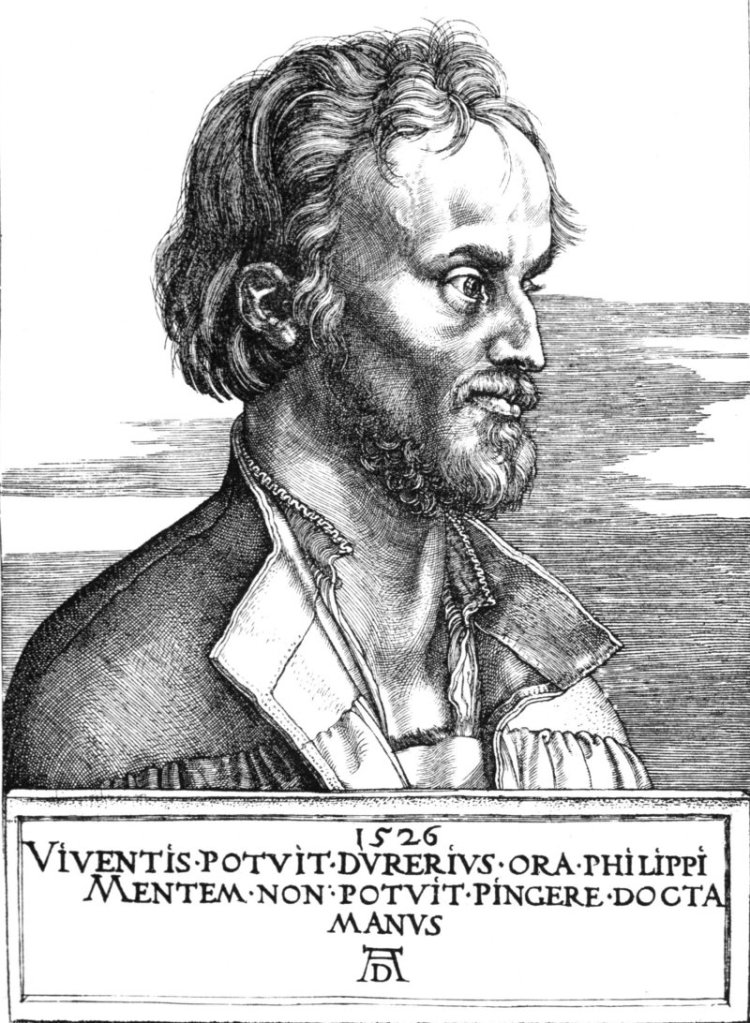
Source: Wikimedia Commons
Melanchthon did so because he was a passionate advocate of astrology and to do astrology you need astronomy and to do astronomy you need arithmetic, geometry, and trigonometry, so he installed the full package in all Lutheran schools and universities. He also ensured that the universities provided enough young academic mathematicians to fill the created positions.
Catholic educational institutions had to wait till the end of the sixteenth century before Christopher Clavius (1538–1612) succeeded in getting mathematics integrated into the Jesuit educational programme and installed a maths curriculum into Catholic schools, colleges, and universities throughout Europe over several decades. He also set up a teacher training programme and wrote the necessary textbooks, incorporating the latest mathematical developments.
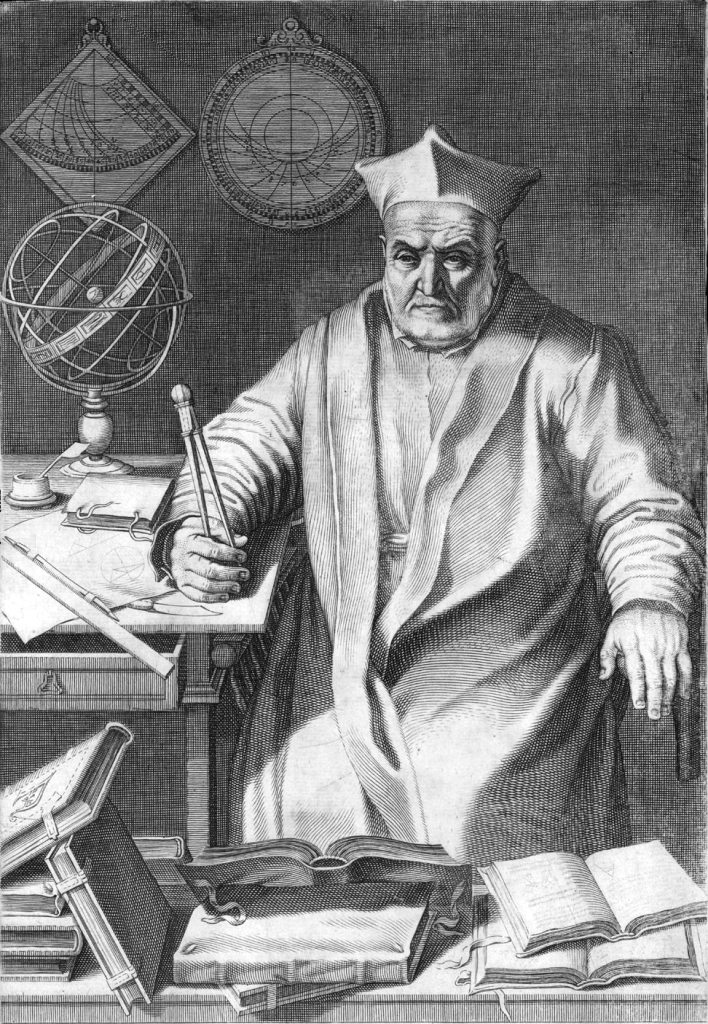
England lagged behind in the introduction of mathematics formally into its education system. Even as late as the early eighteenth century, John Arbuthnot (1667–1735) could write that there was not a single grammar school in England that taught mathematics.
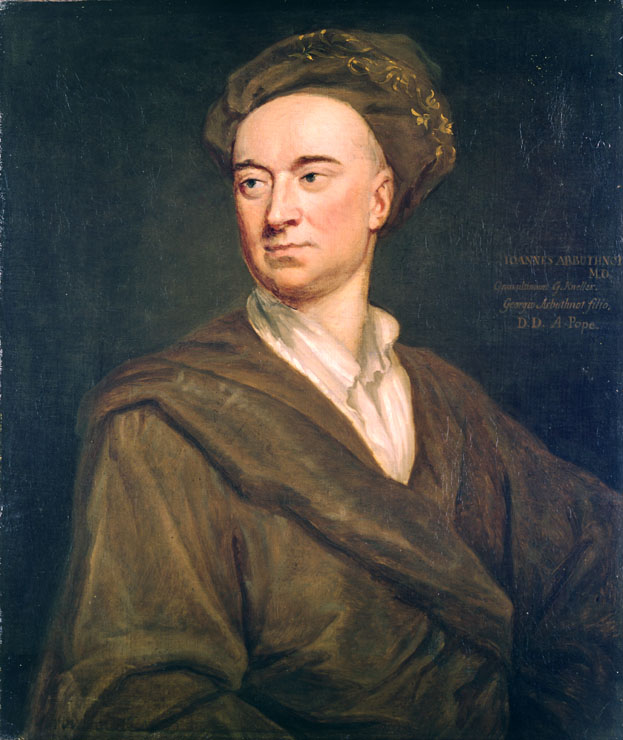
This is not strictly true because The Royal Mathematical School was set up in Christ’s Hospital, a charitable institution for poor children, in 1763, to teach selected boys’ mathematics, so that they could become navigators. At the tertiary level the situation changed somewhat earlier.
Gresham College was founded in London under the will of Sir Thomas Gresham (c. 1519–1579) in 1595 to host public lectures.
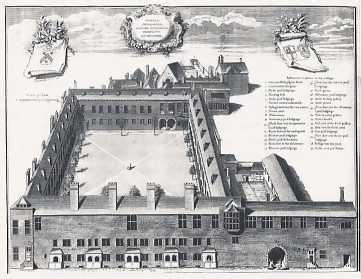
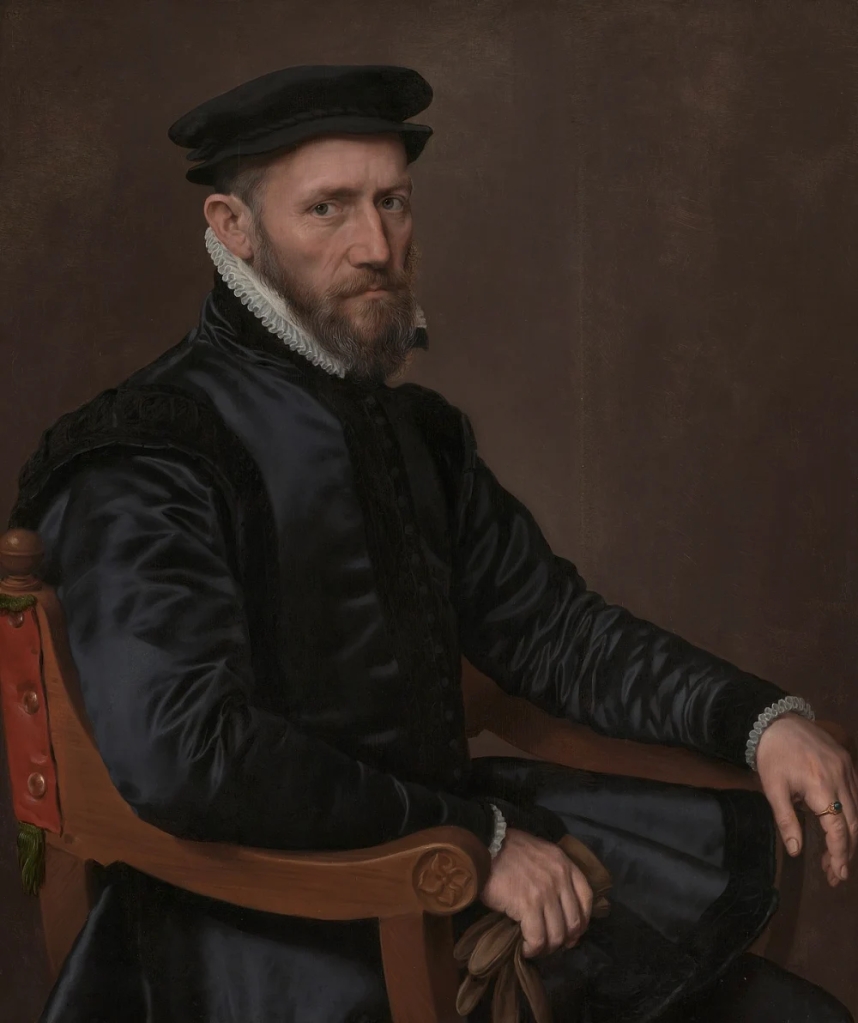
Amongst other topics, professors were appointed to hold lectures in both geometry and astronomy. As with the Royal Mathematical School a century later these lectures were largely conceived to help train mariners. The instructions for the geometry and astronomy professors were as follows:
The geometrician is to read as followeth, every Trinity term arithmetique, in Michaelmas and Hilary terms theoretical geometry, in Easter term practical geometry. The astronomy reader is to read in his solemn lectures, first the principles of the sphere, and the theory of the planets, and the use of the astrolabe and the staff, and other common instruments for the capacity of mariners.
The first university professorships for mathematics were set up at Oxford University in 1619 financed by a bequest from Sir Henry Savile (1549–1622), the Savilian chairs for astronomy and geometry.
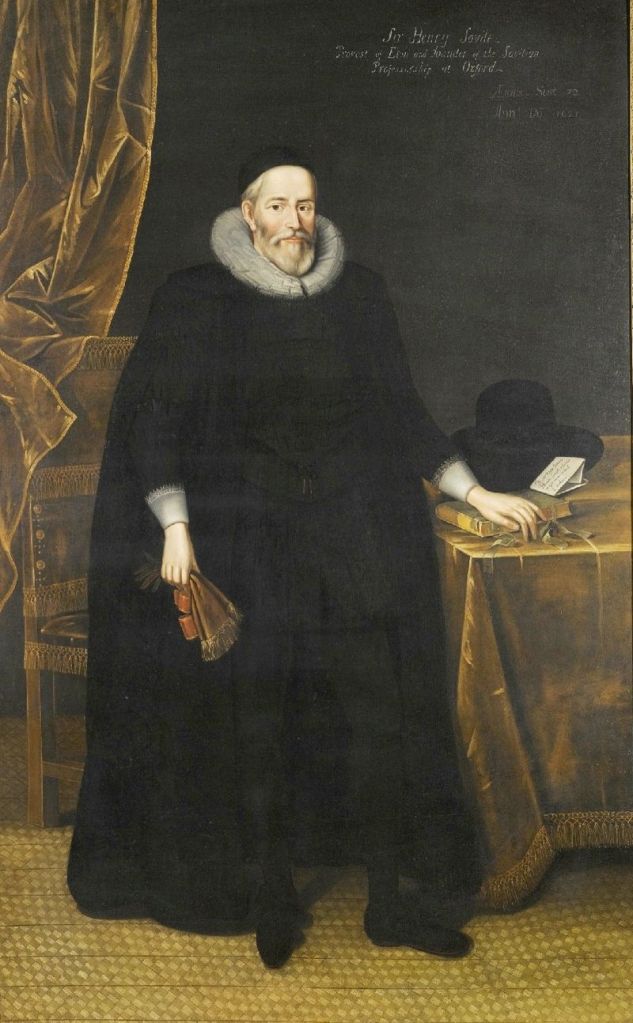
Over the years it was not unusual for a Gresham professor to be appointed Savilian professor, as for example Henry Biggs (1561–1630), who was both the first Gresham professor and the first Savilian professor of geometry.
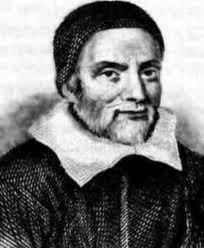
Henry Savile was motivated in taking this step by the wretched state of mathematical studies in England. Potential mathematicians at Cambridge University had to wait until a bequest from Henry Lucas (c. 1610–1663), in 1663, established the Lucasian Chair of Mathematics, whose first incumbent was Isaac Barrow (1630–1677), succeeded famously by Isaac Newton (1642–1726 os). This was followed in 1704 with a bequest by Thomas Plume to “erect an Observatory and to maintain a studious and learned Professor of Astronomy and Experimental Philosophy, and to buy him and his successors utensils and instruments quadrants telescopes etc.” The Plumian Chair of Astronomy and Experimental Philosophy, whose first incumbent was Roger Cotes (1682–1716).
; Maldon Town Council; http://www.artuk.org/artworks/thomas-plume-dd-16301704-3186</p>
<p> ” data-medium-file=”https://wolfscientific.com/wp-content/uploads/2022/07/mathematician-astrologer-conjurer-40.jpg?w=229″ data-large-file=”https://wolfscientific.com/wp-content/uploads/2022/07/mathematician-astrologer-conjurer-40.jpg?w=500″ src=”https://wolfscientific.com/wp-content/uploads/2022/07/mathematician-astrologer-conjurer-7.jpg” alt class=”wp-image-9198″ srcset=”https://wolfscientific.com/wp-content/uploads/2022/07/mathematician-astrologer-conjurer-40.jpg 523w, https://wolfscientific.com/wp-content/uploads/2022/07/mathematician-astrologer-conjurer-40.jpg?w=115 115w, https://wolfscientific.com/wp-content/uploads/2022/07/mathematician-astrologer-conjurer-40.jpg?w=229 229w” sizes=”(max-width: 523px) 100vw, 523px”></a><figcaption>unknown artist; Thomas Plume, DD (1630-1704); Maldon Town Council; <a href=) http://www.artuk.org/artworks/thomas-plume-dd-16301704-3186
http://www.artuk.org/artworks/thomas-plume-dd-16301704-3186Before the, compared to continental Europe, late founding of these university chairs for the mathematical sciences, English scholars wishing to acquire instruction in advanced mathematics either travelled to the continent as Henry Savile had done in his youth or find a private mathematics tutor either inside or outside the universities. In the seventeenth century William Oughtred (1574–1660), the inventor of the slide rule, fulfilled this function, outside of the universities, for some notable future English mathematicians.
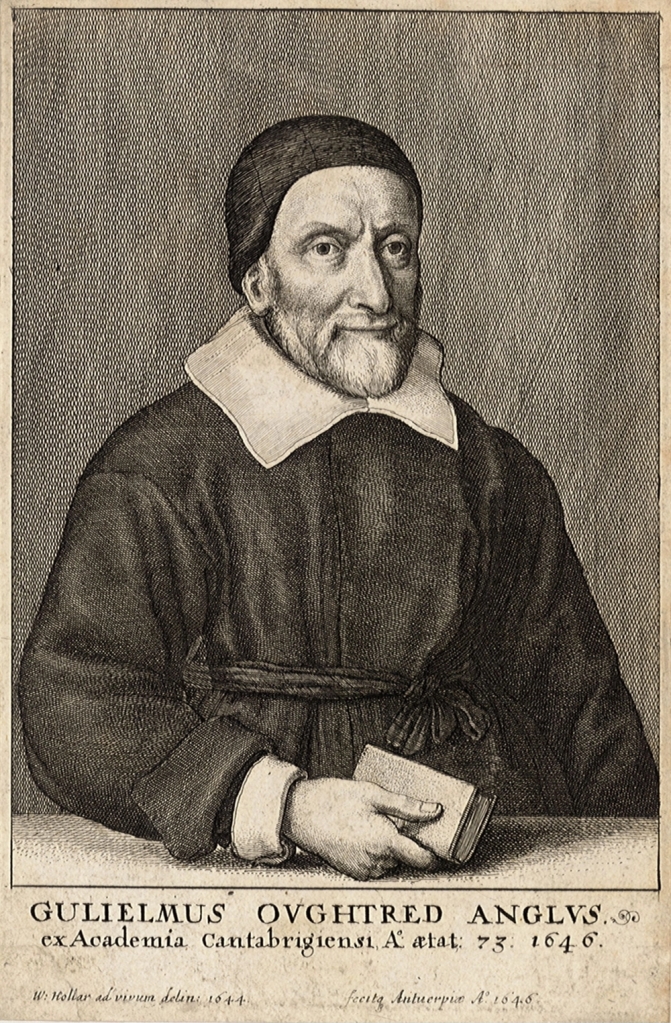
One man, who fulfilled this function as a fellow of Oxford University was Thomas Allen (1542–1632), who we met recently as Kenhelm Digby’s mathematics tutor.
 100vw, 341px”></a><figcaption>Thomas Allen by James Bretherton, etching, late 18th century Source: wikimedia Commons</figcaption></figure>
<p>Although largely forgotten today Allen featured prominently in the short biographies of the <em>Alumni Oxonienses</em> of Anthony Wood (1632–1695) and the Brief Lives of John Aubrey (1626–1697), both of them like Allen antiquaries. Aubrey’s description reads as follows: </p>
<blockquote class=)
Mr. Allen was a very cheerful, facecious man and everybody loved his company; and every House on their Gaudy Days, were wont to invite him. The Great Dudley, Early of Leicester, made use of him for casting of Nativities, for he was the best Astrologer of his time. Queen Elizabeth sent for him to have his advice about the new star that appeared in the Swan or Cassiopeia … to which he gave his judgement very learnedly. In those dark times, Astrologer, Mathematician and Conjuror were accounted the same thing; and the vulgar did verily believe him to be a conjurer. He had many a great many mathematical instruments and glasses in his chamber, which did also confirm the ignorant in their opinion; and his servitor (to impose on Freshmen and simple people) would tell them that sometimes he should meet the spirits coming up his stairs like bees … He was generally acquainted; and every long vacation he rode into the country to visit his old acquaintances and patrons, to whom his great learning, mixed with much sweetness of humour, made him very welcome … He was a handsome, sanguine man and of excellent habit of body.
The “new star that appeared in the Swan or Cassiopeia” is the supernova of 1572, which was carefully observed by astronomers and interpreted by astrologers, often one and the same person, throughout Europe.
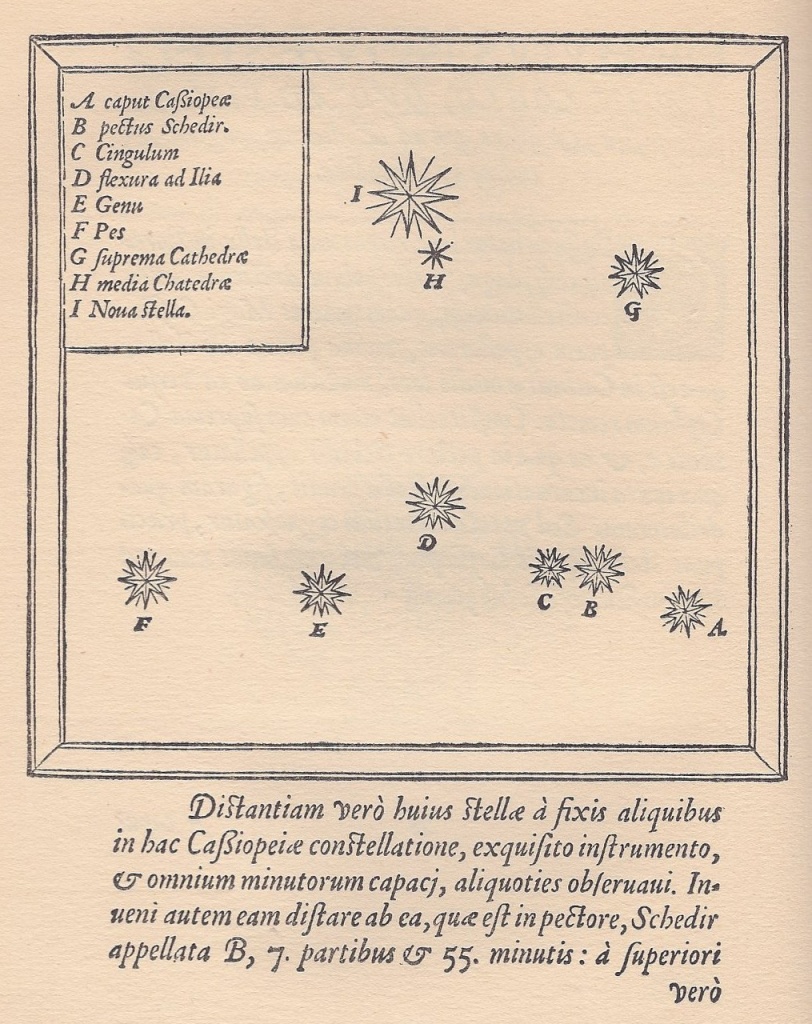
Conjuror in the Early Modern Period meant an enchanter or magician rather than the modern meaning of sleight of hand artist and was closely associated with black magic. Allen was not the only mathematician/astrologer to be suspected of being a conjuror, the same accusation was aimed at the mathematician astronomer, and astrologer, John Dee (1527–c. 1609). At one public burning of books on black magic at Oxford university in the seventeenth century, some mathematics books were reputedly also thrown into the flames. Aubrey also relates the story that when Allen visited the courtier Sir John Scudamore (1542–1623), a servant threw his ticking watch into the moat thinking it was the devil. The anonymous author of Leicester’s Commonwealth (1584), a book attacking Elizabet I’s favourite Robert Dudley, Earl of Leicester (1532–1588) accused Allen of employing the art of “figuring” to further the earl of Leicester’s unlawful designs, and of endeavouring by the “black art” to bring about a match between his patron and the Queen. The same text accuses both Allen and Dee of being atheists.
Anthony Wood described Allen as:
… clarrissimus vir [and] very highly respected by other famous men of his time … Bodley, Savile, Camden, Cotton, Spelman, Selden, etc. … a great collector of scattered manuscripts … an excellent man, the father of all learning and virtuous industry, an unfeigned lover and furtherer of all good arts and sciences.
The religious controversialist Thomas Herne (d. 17722) called Allen:
… a very great mathematician and antiquary [and] a universal scholar.
In his History of the Worthies of Britain (1662), the historian Thomas Fuller (1608–1661) wrote of Allen:
…he succeeded to the skill and scandal of Friar Bacon [and] his admirable writings of mathematics are latent with some private possessors, which envy the public profit thereof.
The jurist John Selden (1584–1654), even in comparison with the historian William Camden (1551–1623), the diplomat and librarian Thomas Bodley (1545–1613) and the Bible translator and mathematician Henry Savile, called Allen:
…the brightest ornament of the famous university of Oxford.
So, who was this paragon of scholarship and learning, whose praises were sung so loudly by his notable contemporaries?
Thomas Allen was the son of a William Allen of Uttoxeter in Staffordshire. Almost nothing is known of his background, his family, or his schooling before he went up to Oxford. It is not known how, where, when, or from whom he acquired his knowledge of mathematics. He began acquiring mathematical manuscripts very early and there is some indication that he was largely an autodidact. He went up to Trinity College Oxford comparatively late, at the age of twenty in 1561. He graduated BA in 1563 and was appointed a fellow of Trinity 1565. He graduated MA in 1567. He might have acquired his mathematical education at Merton College. There is no indication the Allen was a Roman Catholic, but he joined an exodus of Catholic scholars from Trinity, resigning his fellowship, and moving to Gloucester Hall in 1570.
In 1598 he was appointed a member of a small steering committee to supervise and assist Thomas Bodley (1535–1613) in furnishing a new university library. Allen and Bodley had both entered Oxford at around the same time, graduating BA in the same year, and remained live long friends. Allen’s patrons all played a leading role in donating to the new library. About 230 of Allen’s manuscripts are housed in the Bodleian, 12 of them donated by Allen himself when the library was founded and the rest by Kenhelm Digby, who inherited them in Allen’s will.
Through his patron, Robert Dudley, 1st Earl of Leicester, Allen came into contact with John Dee and the two mathematician/astrologers became friends.
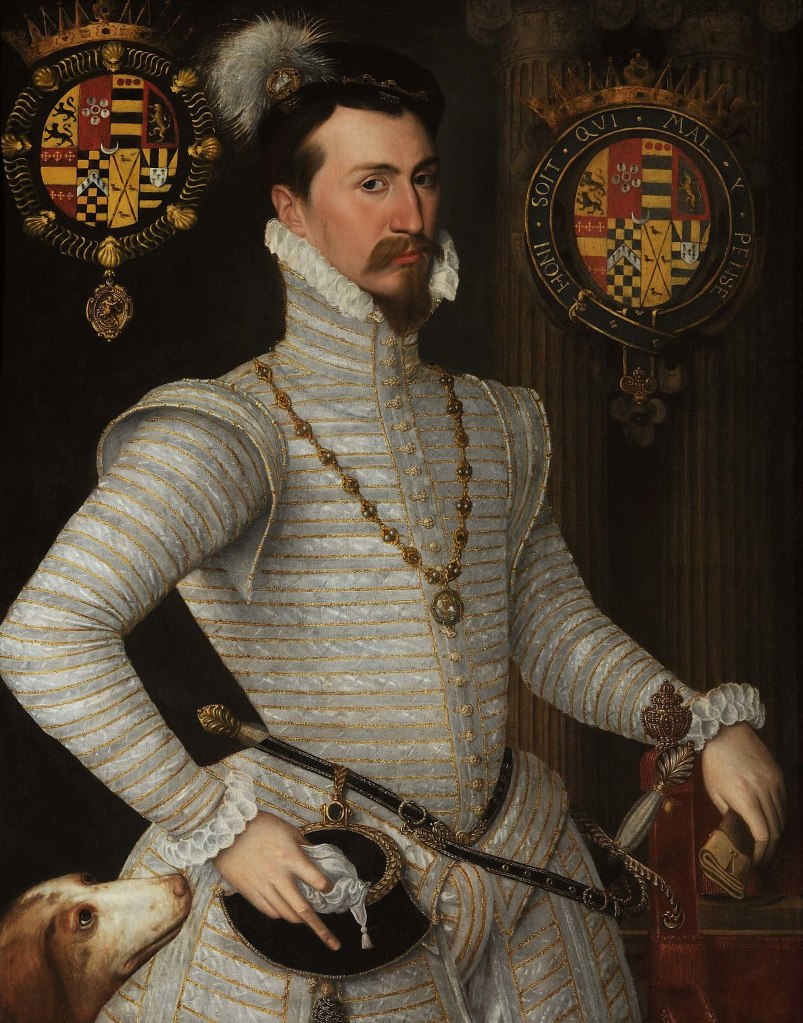
The Polish noble and alchemist Olbracht Łaski (d. 1604), who took Dee with him back to Poland in 1583, also tried to persuade Allen to travel with him to the continent, but Allen declined the invitation.
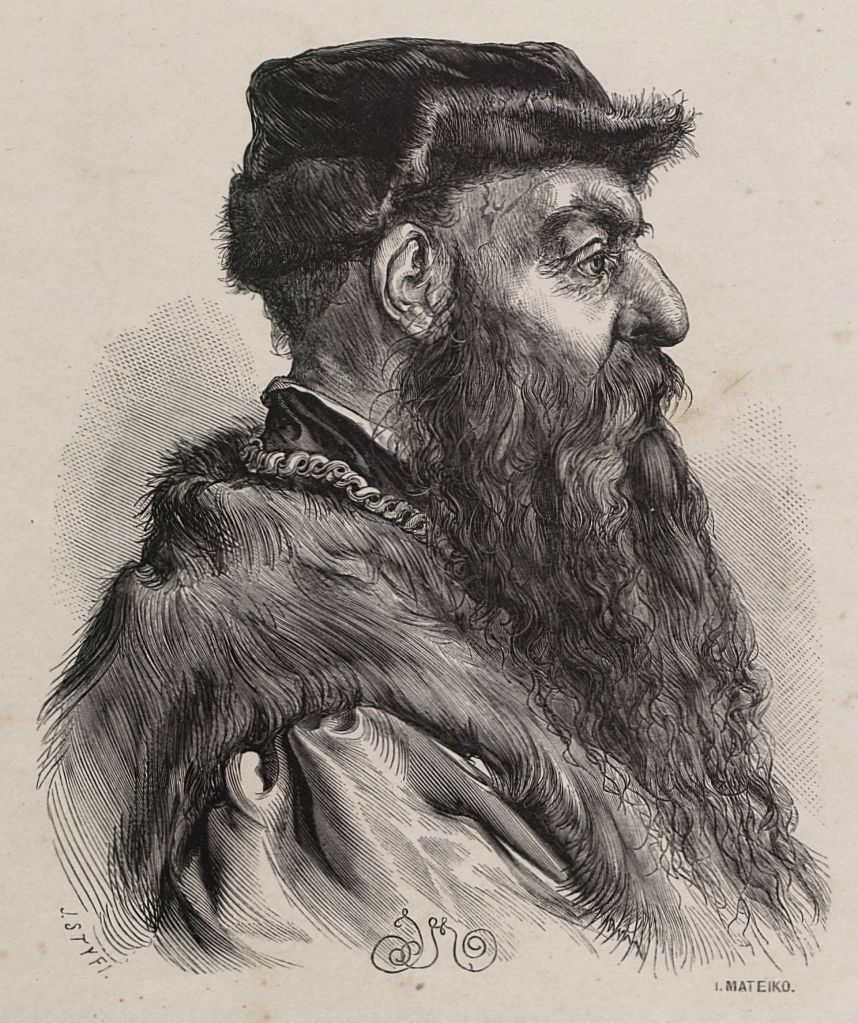
In this time of publish or perish for academics, where one’s status as a scholar is measured by the number of articles that you have managed to get published, it comes as a surprise to discover that Allen, who, as we have seen from the quotes, was regarded as one of the leading English mathematicians of the age, published almost nothing in his long lifetime. His reputation seems to be based entirely on his activities as a tutor and probably his skills as a raconteur.
As a tutor, unlike a Christoph Clavius for example, there is not a long list of famous mathematicians, who learnt their trade at his feet. In fact, apart from Kenelm Digby (1603–1665) the only really well-known student of Allen’s was not a mathematician at all but the courtier and poet Sir Philip Sidney (1554–1586) for whom he probably wrote a sixty-two-page horoscope now housed in the Bodleian Library.
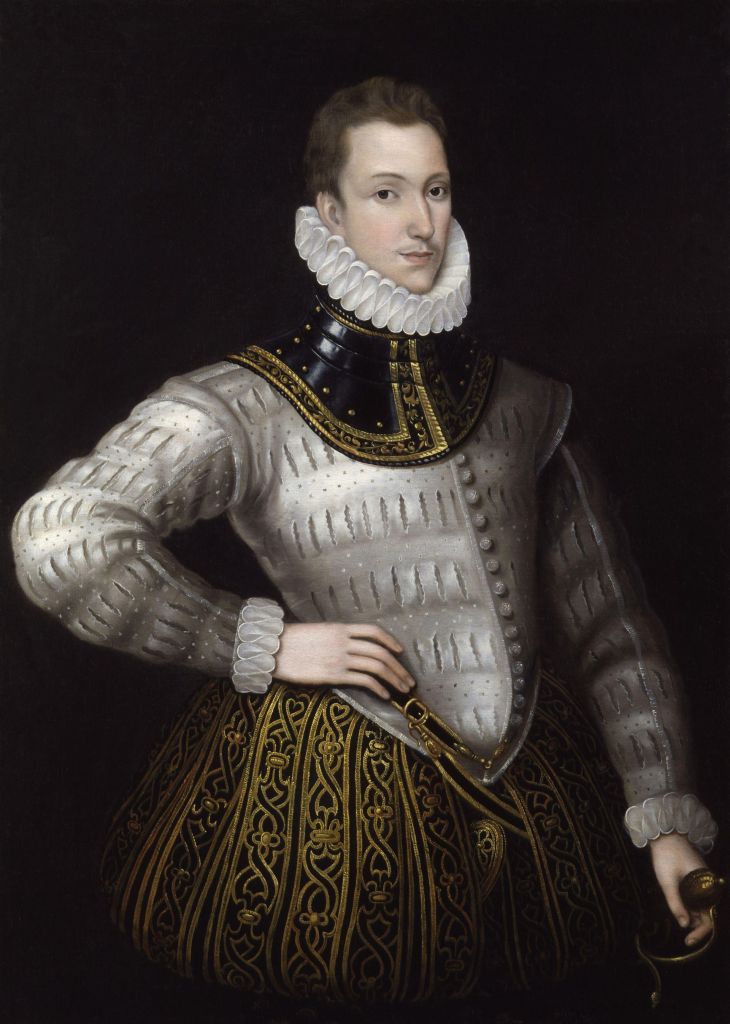
He may have taught Richard Hakluyt (1553–1616) the promotor of voyages of explorations.
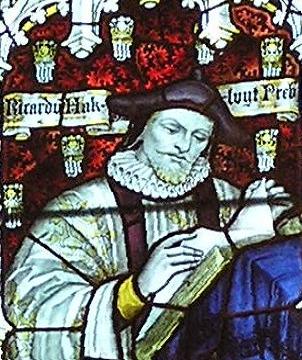
He did teach Robert Fludd (1574–1637) physician and occult philosopher
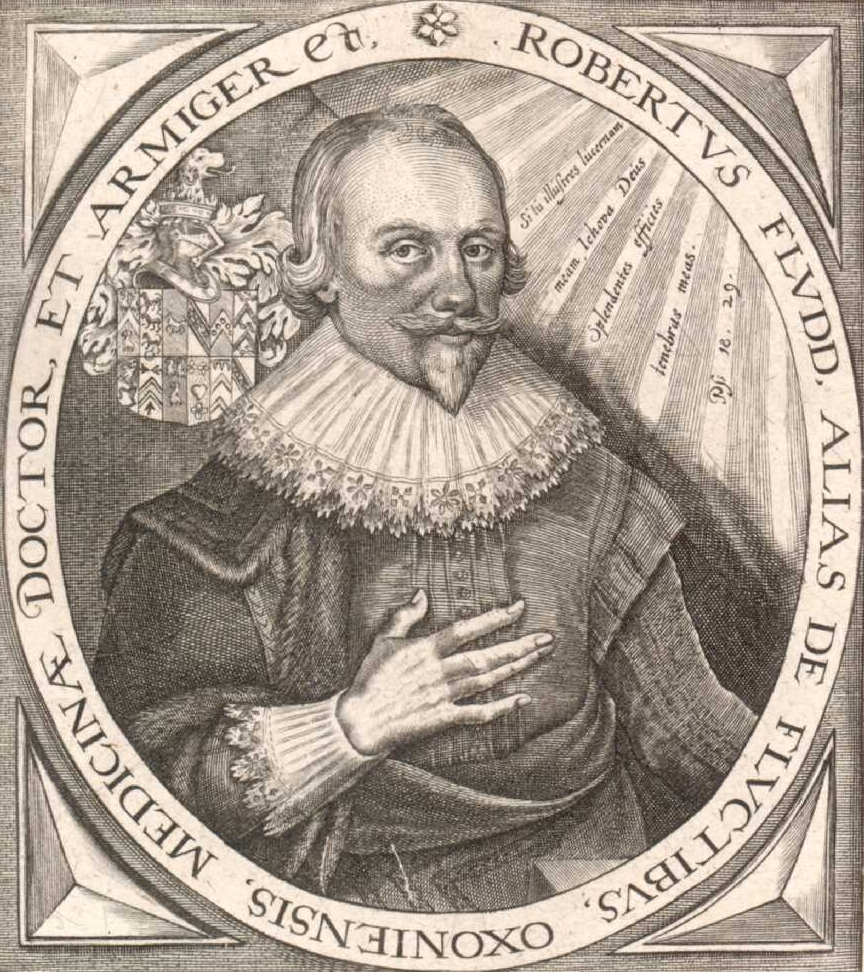
as well as Sir Thomas Aylesbury (1576–1657), who became Surveyor of the Navy responsible for the design of the warships.
 100vw, 401px”></a><figcaption>This painting by William Dobson probably represents Sir Thomas Aylesbury, 1st Baronet. <br />Source: Wikimedia Commons</figcaption></figure>
<p>At the end of his life, he taught and influenced the German scientific translator and communicator, Theodore Haak (1605–1690), who only studied in Oxford between 1628 and 1631.</p>
<figure class=)
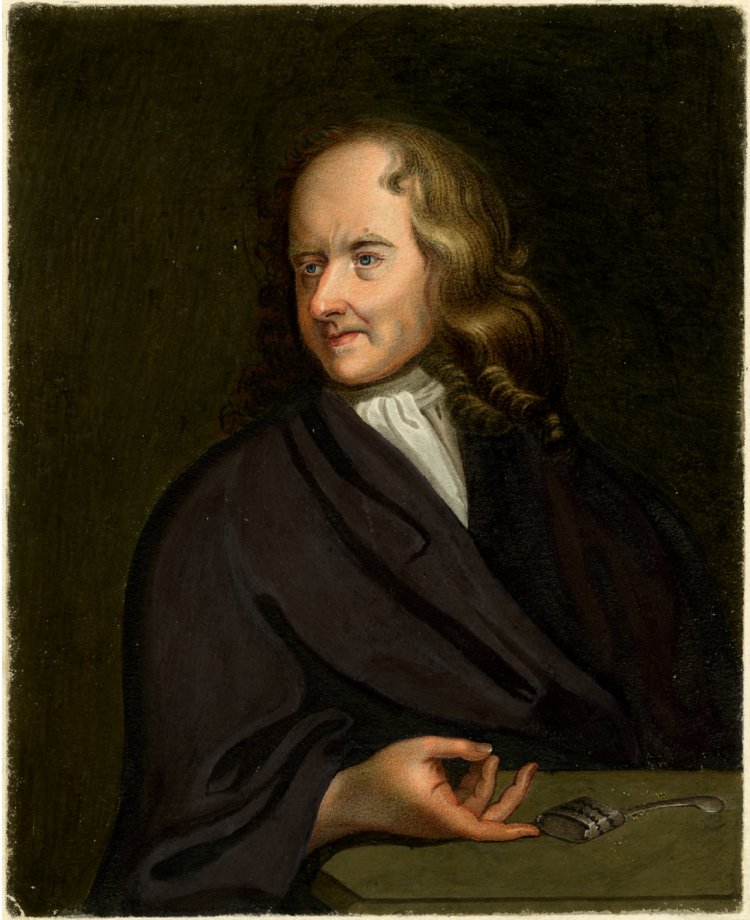
As a member of Gloucester Hall, he tutored the sons of many of the leading, English Catholic families. In this role, he tutored several of the sons of Henry Percy, 8th Earl of Northumberland the highest-ranking Catholic aristocrat in the realm. He probably recommended the Gloucester Hall scholar, Robert Widmerpoole, as tutor to the children of Henry Percy, 9th Earl of Northumberland. Percy went on to become Allen’s patron sometime in the 1580s.
 by Sir Anthony Van Dyck (1599-1641). The ‘Wizard Earl’ was painted posthumously as a philosopher, hung in Square Room at Petworth. This is NT owned.</p>
<p> ” data-medium-file=”https://wolfscientific.com/wp-content/uploads/2022/07/mathematician-astrologer-conjurer-75.jpg?w=258″ data-large-file=”https://wolfscientific.com/wp-content/uploads/2022/07/mathematician-astrologer-conjurer-75.jpg?w=500″ src=”https://wolfscientific.com/wp-content/uploads/2022/07/mathematician-astrologer-conjurer-18.jpg” alt class=”wp-image-9219″ srcset=”https://wolfscientific.com/wp-content/uploads/2022/07/mathematician-astrologer-conjurer-75.jpg 859w, https://wolfscientific.com/wp-content/uploads/2022/07/mathematician-astrologer-conjurer-75.jpg?w=129 129w, https://wolfscientific.com/wp-content/uploads/2022/07/mathematician-astrologer-conjurer-75.jpg?w=258 258w, https://wolfscientific.com/wp-content/uploads/2022/07/mathematician-astrologer-conjurer-75.jpg?w=768 768w” sizes=”(max-width: 859px) 100vw, 859px”></a><figcaption>HENRY PERCY, 9TH EARL OF NORTHUMBERLAND (1564-1632) by Sir Anthony Van Dyck (1599-1641). The ‘Wizard Earl’ was painted posthumously as a philosopher, hung in Square Room at Petworth. This is NT owned. Source: Wikimedia Commons</figcaption></figure>
<p>Allen became a visitor to Percy’s Syon House in Middlesex, where he became friends with the mathematician and astronomer <a href=) Thomas Harriot (c. 1560–1621), who studied in Oxford from 1577 to 1580.
Thomas Harriot (c. 1560–1621), who studied in Oxford from 1577 to 1580.
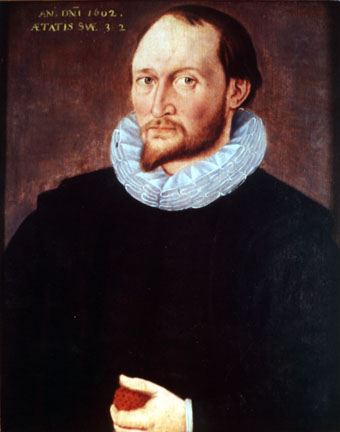
When he died Harriot left instructions in his will to return several manuscripts that he had borrowed from Allen. Percy was an avid fan of the sciences known for his enthusiasm as The Wizard Earl. He carried out scientific and alchemical experiments and assembled one of the largest libraries in England. Allen with his experience as a manuscript collector and founder of the Bodleian probably advised Percy on his library. Harriot was not the only mathematician in Percy’s circle, he also patronised Robert Hues (1553–1632), who graduated from Oxford in 1578, Walter Warner (1563–1643), who also graduated from Oxford in 1578, and Nathaniel Torporley (1564–1632), who graduated from Oxford in 1581. Torporley was amanuensis to François Viète (1540–1603) for a couple of years. Torpoley was executor of Harriot’s papers, some of which he published together with Warner. All three of them were probably recommended to Percy by Allen.
When Allen died, he had little to leave to anybody having spent all his money on his manuscript collection, which he left to Kenelm Digby, who in turn donated them to the Bodleian Library. But as we have seen he was warmly regarded by all who remembered him and, in some way, he helped to keep the flame of mathematics alive in England, at a time when it was burning fairly low.